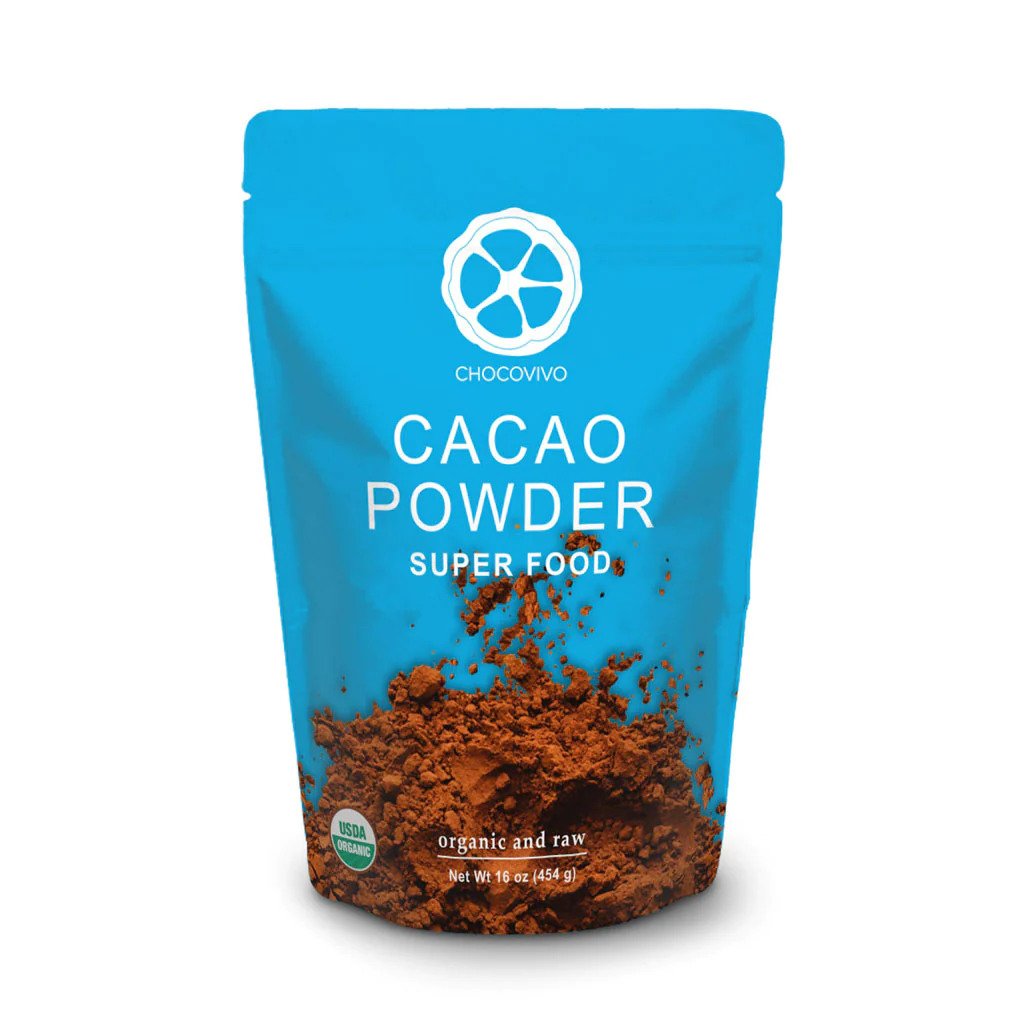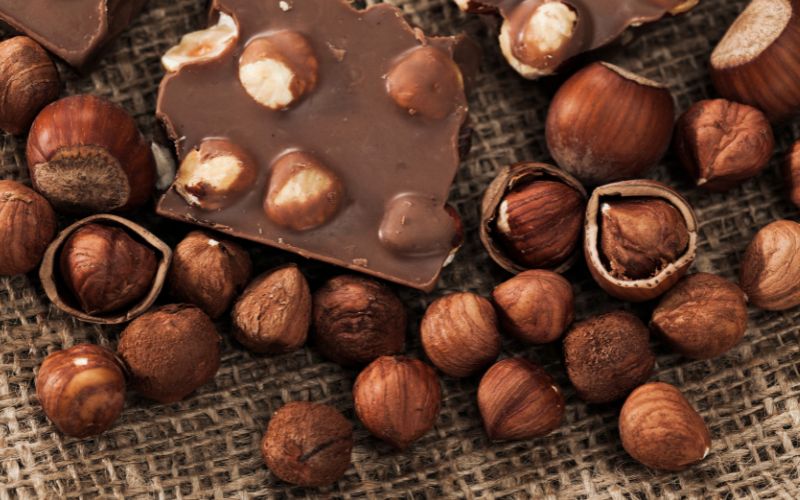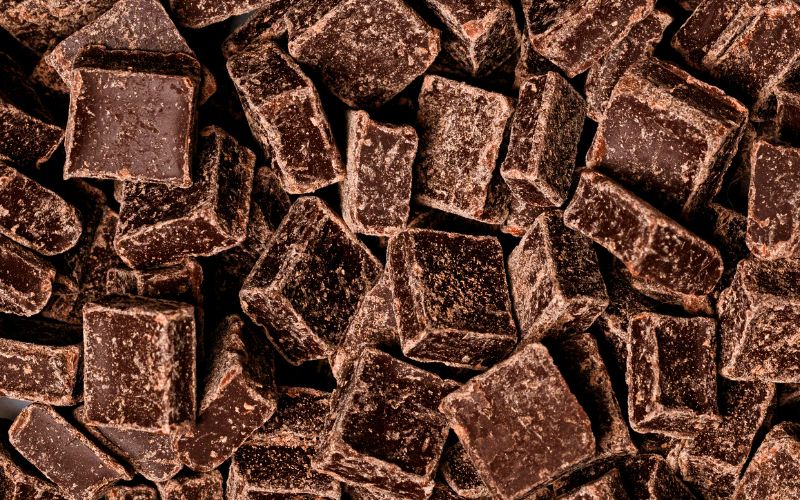Summarized Version: Detailed Exploration of the Questions of Mexican Chocolate
While the question may seem simple enough, there is not one single definition of Mexican Chocolate. You could ask many people, around the world, what Mexican Chocolate is and receive a wide variety of answers and varying degrees of confidence. Here's the truth about Mexican Chocolate.
Jump Links

What is Mexican Chocolate?
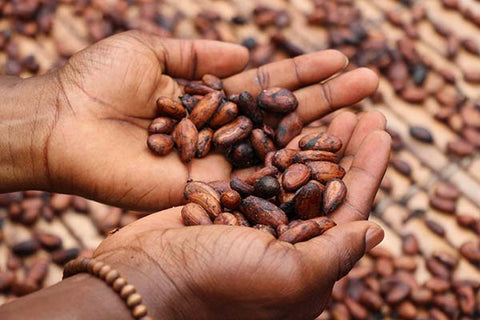
When cacao was taken to Spain, it changed drastically throughout its journey through Europe. Sugar was added to sweeten the drink and eventually, in the 19th century, chocolate was made into bars to be enjoyed as a melt-in-your-mouth solid treat.
In Europe, cacao was and still is predominantly processed by conching and tempering to ensure a smooth, creamy, and shiny product. Europeans brought cacao to their colonies in Africa, where most of the worlds chocolate (over 70%) is grown and sourced today.
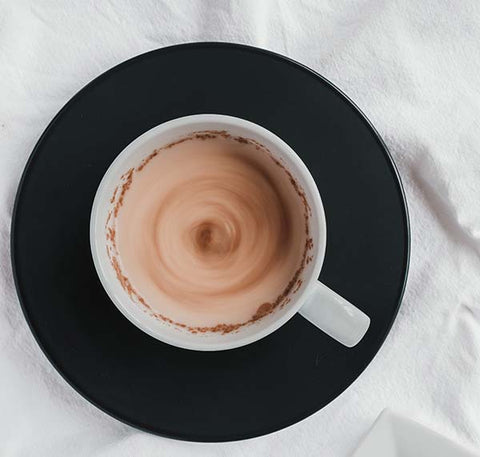
In what is Mexico today, cacao was still consumed predominantly as a drink, and this remains true today. As a bar, chocolate in Mexico is minimally processed to retain the health benefits and integrity of cacao, which results in a more gritty, rustic texture than European chocolate.
More often than not, chilies, cinnamon, sugar and or honey is added to drinks, mole and solid cacao products, like bars of chocolate.
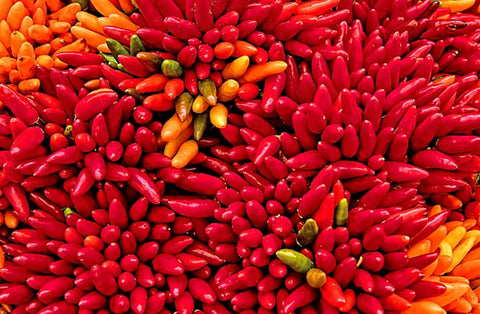
In the United States, when people think of Mexican Chocolate they often think of the cinnamon and spicy disk-shaped chocolate used to make hot chocolate drinks. This is not surprising given the history. However, this does not wholly define Mexican Style Chocolate.
Unlike Nestle’s Abuelita Hot Chocolate disks, it only makes sense that any form of Mexican Chocolate or Cacao should be sourced from cacao trees and plantations in Mexico (not Côte d'Ivoire and Ghana).

The flavor complexities in chocolate are largely affected by local climate, soil acidity, soil composition, and topography, among many other environmental and processing factors.
Terroir, a term originally applied to wine, which describes the set of environmental factors, farming methods and growth characteristics of a crop, is highly applicable to cacao.

ChocoVivo sources cacao directly from our growers, Hacienda CacaoTera Jesus Maria, in Tabasco, Mexico. We take whole cacao nibs (de-shelled cacao beans) and lava-stone grind it using traditional Mayan methods. No soy, dairy, fillers or extracts are added, only whole organic cacao and whole natural ingredients, as Mother Nature intended.
Our mantra is “Simple is Better” and we aim to show the world that chocolate is truly a food, not just candy. When processed carefully cacao can retain most of it's antioxidant and nutritional benefits also known as a superfood.
For a bit of heat and cinnamon, try our Mayan Tradition Bar or come in for a customizable, rich, foamy hot chocolate.
Interested in the full history of cacao and Mexican Chocolate, or how cinnamon (not native to Mexico or South America) became so popular in chocolate and Mexican Cuisine? Keep reading or use the jump links at the top of the page to find exactly what you are looking for!
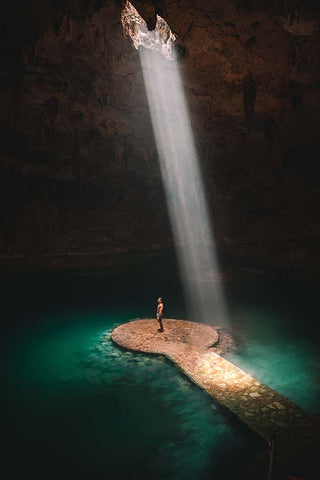
photo: Kari Bjorn Photography
Long Answer: Detailed Exploration of the Questions of Mexican Chocolate
While the question may seem simple enough, there is not one single definition of Mexican Chocolate. You could ask many people, around the world, what Mexican Chocolate is and receive a wide variety of answers and varying degrees of confidence.
Just as various parts of the world, individuals, and even various regions in Italy would define or describe pizza differently, Mexican Chocolate has different meanings across the globe and across time.
By examining history, current market examples and various viewpoints we can get closer to understanding what Mexican Chocolate is, but it cannot be ultimately defined.
We will begin this exploration with analysis of the more popular notions of Mexican Chocolate established in the USA and work our way back to the historical and anthropological details of cacao and chocolate in Mexico and MesoAmerica.
North America and Today
In the USA, most people think of Mexican Chocolate as a circular disk of cinnamon and spice chocolate scored into segments and used to make Mexican Hot Chocolate. Even this description begs the question of whether the chunk of flavored chocolate or the drink made from it is "Mexican Chocolate".
There are two major brands producing “chocolate para mesa” - literally translating to "table chocolate" - that likely contribute to certain ideas of Mexican Chocolate in the United States.
The first is Nestle’s (a Swiss company) Abuelita which is sold in disk and instant powder form. While it is flavored with cinnamon and vanilla, quintessential ingredients in most variations of Mexican Chocolate, it contains more sugar than cacao and is loaded with unnecessary ingredients such as vegetable oil, soy lecithin, artificial flavors and cocoa powder.
According to Nestle’s website they use cacao beans from their mass-scale farms in Ecuador and the Ivory Coast (not quite Mexico).
Alternatively, Chocolatera de Jalisco’s Ibarra chocolate para mesa is made in Mexico and uses Mexican cacao beans. However, it also contains soy lecithin, vegetable oil (instead of cocoa butter), artificial cinnamon flavoring and more sugar than cacao.
Shouldn’t any type of chocolate contain more cacao than sugar? As both brands are made primarily for use in hot chocolate, the sugar granules remain undissolved or incorporated, resulting in a grainy and chalky texture.
This texture is often associated with chocolate from Mexico or Mexican Style Chocolate, whereas smooth, velvety chocolate is more closely associated with European Style Chocolate.
Mexican Chocolate is not to be simply described by these hockey puck like bars of chocolate, but the fact that they are used to make drinking chocolate brings us to the historical and traditional context of cacao, chocolate and Mexican Chocolate.
Historical and Traditional Significance
Over 2000 years ago, cacao was consumed in drink form by the Olmec, Mayan and Aztec cultures of modern-day Mexico and Northern South America. A time when money grew on trees so to speak, as cacao beans were used as currency across MesoAmerica.
The Olmecs were the first to consume cacao beans. The Mayan people were the first to domesticate Theobroma Cacao-- the cacao tree. They learned how to ferment and roast the beans, then ground them into a paste. The paste was then mixed with maize, water, and oftentimes spiced with chilies or vanilla (another crop native to that part of the world).
Mayan warriors would drink 100% cacao with water, no sugar added. If sweetened at all, honey was used. They embraced this ancient superfood, high in antioxidants, theobromine (a cousin to caffeine), vitamins, magnesium, potassium and iron, though they may not have understood its health benefits.
The Aztecs, who rose to power around 1200 AD believed that cacao was the “blood of the gods” hence its use is ceremonies and human sacrifice. It is believed that the legendary Aztec ruler, Montezuma II drank upwards of 50 cups of cacao from golden goblets every day!
Under his rule, he only allowed those with military standing, elite status and his guards and servants to consume cacao. The Aztecs did not grow cacao, but instead traded for it or demanded it as payment from the people they conquered.
For these ancient trend setting cultures, cacao was reveled and enjoyed for its bitter complexity. Ancient MesoAmerican perspective on cacao gave way to its scientific name “Theobroma Cacao”, meaning “food of the gods” in Greek.
How Europe Changed Chocolate
The first documentation of cacao reaching Europe is not entirely clear, however the earliest documentation is from a Domincan document. It describes a Dominican priest who took K’ekchi Mayan nobles to the Spanish court of Philip II, who welcomed them. They made chocolate for him there in drink form.
The arrival of cacao to Spain changed the consumption of cacao across the globe for centuries to come. The Spanish had mixed feelings about cacao, but by mixing cacao with sugar (a plant not grown in the Americas) and adding it to water, they created a sweeter drink beloved by many. They even invented a tool, molinillo, for mixing chocolate and creating a frothy foam atop the drink. After a few decades, chocolate invaded all of western Europe.
Eventually, bars of chocolate were invented and consumed in mass quantities in the 19th century. However, the process for making bars of chocolate vastly differed from the way the Olmecs, Mayans and Aztecs consumed and produced it, in that it was processed to separate the fats (cocoa butter) from the solids (cocoa powder), then conched (grinding the cacao for hours at a time) and tempered to achieve a smooth, velvety texture.
Whereas most chocolate made in Mexico, to this day, retains a rustic, gritty and chalky texture from a stone grinding process using lava stones and metate y mano, similar to mortar and pestle.
So, what can be said today from this long history of chocolate across the globe and across time? It is clear that how many think of Mexican Chocolate today is inspired by both the ancient traditions of cacao consumption as a drink and the Spanish’s role in shifting flavor profiles from bitter to sweet, from drinks to food and eventually candy.
Therefore, it makes sense that sweet, spiced and rustic would all be characteristic of “Mexican Chocolate”. Since the Spanish conquered much of MesoAmerica and what is today Mexico, it makes sense that Mexican Chocolate would then be both a drink and a bar or solid form of chocolate, a collaboration of Olmec, Mayan, Aztec, Spanish and various European cultures.
Cinnamon in Chocolate
You may be wondering how cinnamon comes into the picture of Mexican Chocolate… Cinnamon across the globe has its own extensive history, but its beginning role in chocolate is unique to Mexico. Though cinnamon is not native to Mexico or South America.
In 1565, a Spanish galleon sailed to Acapulco, Mexico with 50,000 pounds of Ceylon Cinnamon from Sri Lanka. Most of it was shipped onward to Spain, but much of it remained in the Americas. Ceylon Cinnamon quickly became beloved in Mexican cuisine for use in sweet to savory to spicy foods and drinks. There are two main types of cinnamon- Ceylon and Cassia.
While Cassia Cinnamon (Indonesia) is cheaper and prettier than true Ceylon Cinnamon (Sri Lanka), its flavor profiles are more mild and less complex. The USA uses Cassia Cinnamon in majority, but is slowly shifting to the higher acclaimed Ceylon Cinnamon.
True Mexican dishes and recipes use Ceylon Cinnamon giving their dishes- like mole and chocolate- a unique spiced quality. Even with a range of approaches if Traditional Mexican Chocolate includes cinnamon, it should be made with Ceylon, not Cassia.
Where to Buy Mexican Chocolate
You can find Nestle's Abuelita or Ibarra Mexican Chocolate Disks at almost any Mexican Market, but for robust and authentic flavors choose ChocoVivo. Simply looking at the ingredient comparison below, it is clear what is healthier, more authentic, complex and flavorful. At ChocoVivo, we are Chocolate Makers dedicated to traditional chocolate making methods, dating back over 2000 years.
All of our chocolate is stone-ground using lava stones, it is not conched, tempered or over-refined. We cut out the middle-man in order to have a direct-to-grower relationship, establishing transparency and longevity.
We start with Mexican Cacao Beans from our partner plantation, Hacienda Jesus Maria, in Tabasco, Mexico and end with rustic bars of chocolate. We believe that “Simple is Better,” from using only whole Mexican Cacao Nibs to whole spices. The ingredients we use are as natural as Mother Earth intended our food to be-- no dairy, no soy, no fillers, no flavorings and no extracts.
Similarly, our chocolate drinks use our chocolate, not cocoa powder. We whip up a glorious foam to represent our dedication and love for our customers, history and our cacao’s origins.
**While all of our chocolate is considered “Mexican Chocolate,” our best seller more closely ties with the history of cacao in Mexico and historical MesoAmerica. Our best-seller Mayan Tradition Chocolate (bar, paleo bar, powder) is made with Trinitario Cacao nibs, un-refined cane sugar, Ceylon cinnamon, Pasilla Negro chilies, Guajillo Chilies, and Chipotle Chilies.
It is cinnamon forward with a gradual heat from the chilies, a well balanced journey for your taste buds. Then, when taken one more step toward traditions it can be enjoyed as a rich hot chocolate or sipping chocolate.
Mexican Chocolate by no means ends with drinks or chocolate bars, it can be used in baked goods, savory dishes, cocktails, beauty, health and beyond. Taste true Mexican Chocolate in-store at ChocoVivo in Los Angeles, order online, and browse our recipes and articles for inspiration on how to use our chocolate! At ChocoVivo, we “Live Chocolate.”
|
INGREDIENTS IN BIG BRAND “MEXICAN CHOCOLATE” VS ChocoVivo Mayan Tradition :
ChocoVivo Mayan Tradition: Mexican Cacao Nibs, Cane Sugar, Almonds, Ceylon Cinnamon Sticks, Guajillo Chili Pepper, Pasilla Negro Pepper, Chipotle Morita Pepper. Abuelita: Sugar, Chocolate, Soy Lecithin, Vegetable Oil (Palm, Shea Nut And/Or Illipe Nut), Artificial Flavor, PGPR (Emulsfier), Cocoa Processed with Alkalai. Ibarra: Sugar, Cocoa Liquor, Vegetable Fat (not cocoa butter), Soy Lecithin, and Cinnamon Flavoring. |


